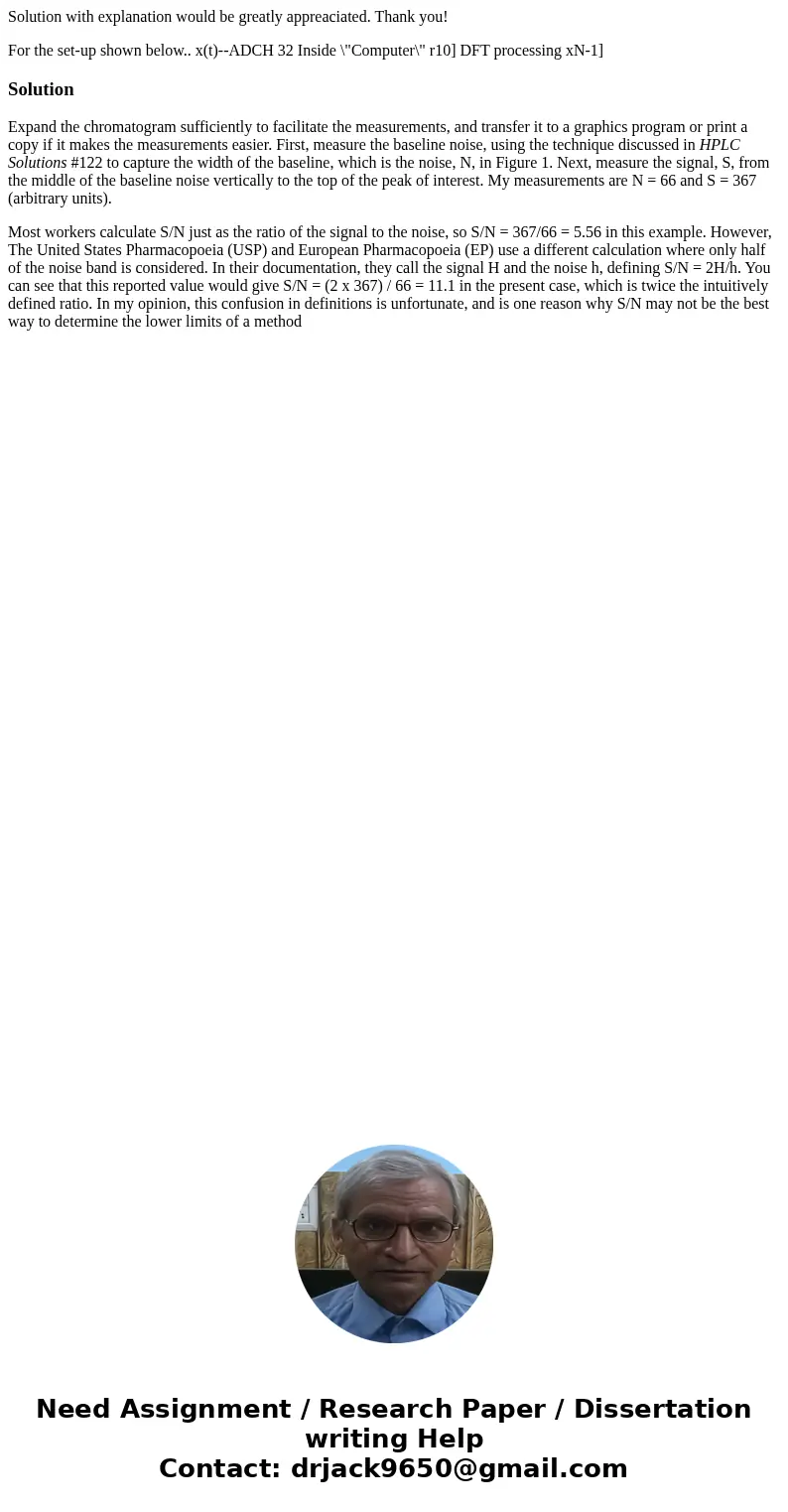Solution with explanation would be greatly appreaciated Than
Solution with explanation would be greatly appreaciated. Thank you!
For the set-up shown below.. x(t)--ADCH 32 Inside \"Computer\" r10] DFT processing xN-1]Solution
Expand the chromatogram sufficiently to facilitate the measurements, and transfer it to a graphics program or print a copy if it makes the measurements easier. First, measure the baseline noise, using the technique discussed in HPLC Solutions #122 to capture the width of the baseline, which is the noise, N, in Figure 1. Next, measure the signal, S, from the middle of the baseline noise vertically to the top of the peak of interest. My measurements are N = 66 and S = 367 (arbitrary units).
Most workers calculate S/N just as the ratio of the signal to the noise, so S/N = 367/66 = 5.56 in this example. However, The United States Pharmacopoeia (USP) and European Pharmacopoeia (EP) use a different calculation where only half of the noise band is considered. In their documentation, they call the signal H and the noise h, defining S/N = 2H/h. You can see that this reported value would give S/N = (2 x 367) / 66 = 11.1 in the present case, which is twice the intuitively defined ratio. In my opinion, this confusion in definitions is unfortunate, and is one reason why S/N may not be the best way to determine the lower limits of a method

 Homework Sourse
Homework Sourse